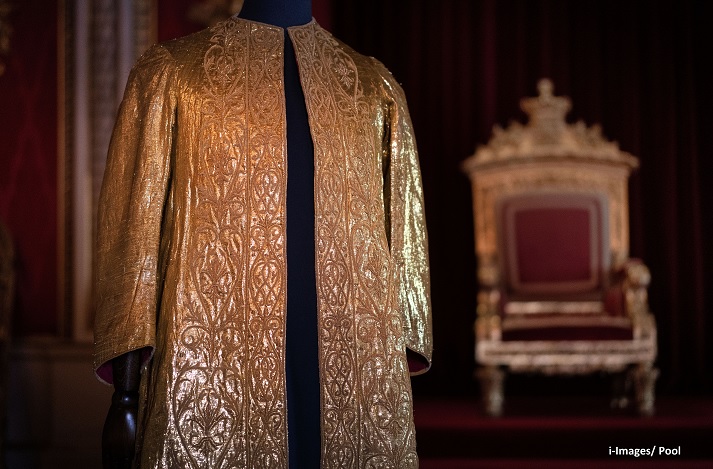
The King will be wearing several different significant garments throughout the Coronation on 6 May at Westminster Abbey. While some of those garments will be made specifically for him, there are also many garments that have been used at multiple coronations. The Supertunica has been used for three previous coronations.
The Supertunica is a coat that is made of gold silk. The Royal Collection Trust explains that it is a “full-length, sleeved coat of gold silk, opening at the front, with a narrow strip and wider band of foliate-embroidered ornament to either side and lined with red tabby silk”.
It also features embroidered roses which are the national flower of England, shamrocks which are the national flower of Northern Ireland, and thistles which are the national flower of Scotland.

His Majesty will put the Supertunica on after he has been anointed by the Archbishop of Canterbury and will wear it under the Imperial Mantle. He will wear it until he has been formally Invested and will then wear the purple Robe of Estate to leave the Abbey.
The Supertunica that The King will be wearing to his coronation was created in 1911 for his great-grandfather’s coronation in 1911. Robemakers Wilkinson and Son created this garment for King George V; it was worn again by his son, King George VI, at his 1937 coronation, and his granddaughter, Queen Elizabeth II, at her 1953 coronation.
The Supetunica was included in the ‘Liber Regalis’ (which translates to Royal Book), an ornately decorated manuscript that was created in 1382 to help coronation organisers meaning that the garment’s origins are well over 500 years old.
While the Supertunica and several other garments have been used for multiple generations, there are also garments that have been made specifically for The King, including his Robe of State and Robe of Estate.

